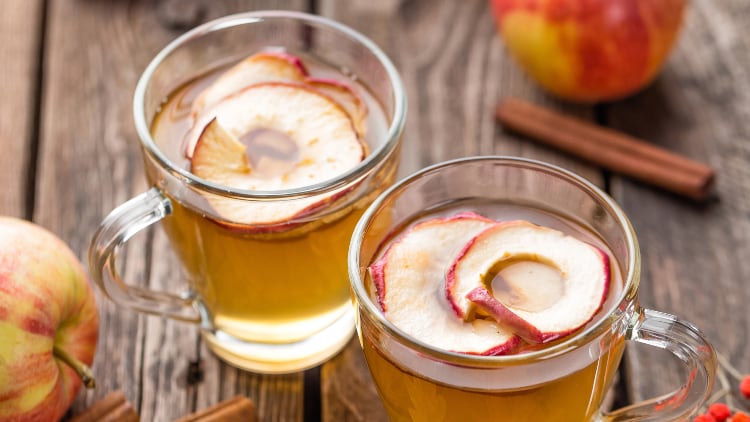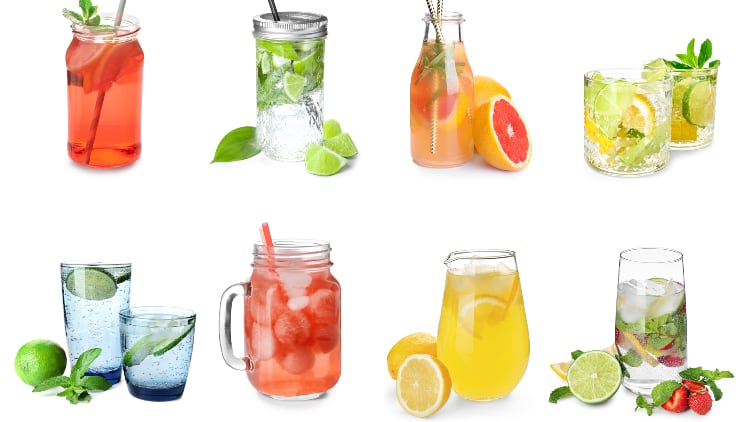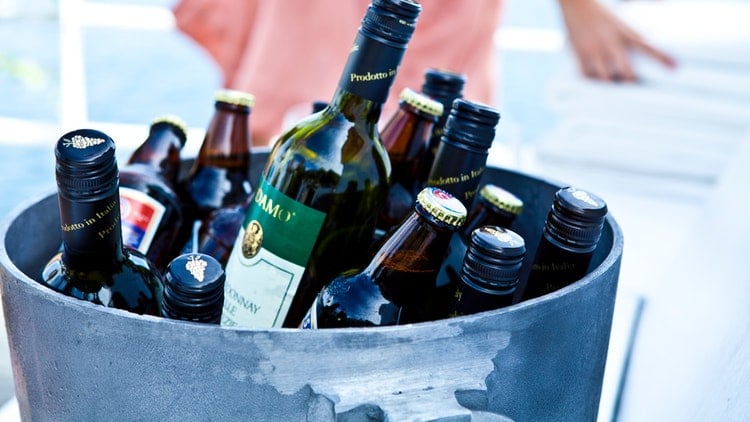Fruit takes the lead
Draught cider is seeing strong growth going into autumn, with fruit variants leading the way. Given current growth rates, CGA predicts the fruit cider category to be bigger than apple by 2020.
Kopparberg UK category controller Anne Claypole explains: “While we see the current draught fruit cider marketplace dominated by a few key players, there’s certainly enough space for a premium option to sit alongside others – particularly as consumers will pay more for a premium alternative.
“More than half of all UK cider drinkers in the on-trade would choose Kopparberg, if available*. Only a third of all cider drinkers would choose our next biggest competitor*, highlighting the importance of stocking the brand.
“Operators should embrace multiple draught options for fruit cider. Tiering your range is imperative and should be considered.
“Kopparberg Strawberry & Lime, on draught, is primed to drive growth – the variant has more drinkers than any other cider brand*. Currently merchandised alongside the UK’s best-selling dark fruit variant in a large managed group, we are not seeing cannibalisation but, rather excitingly, the introduction of the lighter fruit variant is driving overall growth.”
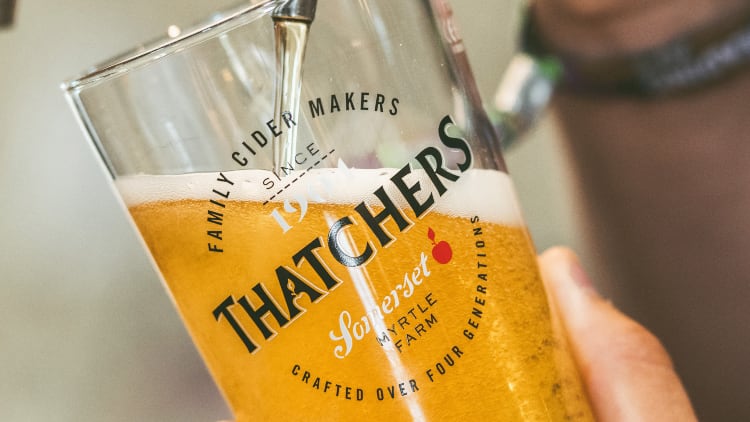
(*Source: CGA BrandTrack July 2019)
Summer is cider season, everyone knows that. Sales spike by an average of 16% as the days grow longer, according to CGA statistics. They fall by a similar figure in winter, with January the driest month of all. Still, that’s no reason to write cider off as the nights draw in. Many are now looking to extend the cider season all the way to Christmas. How?
As the seasons change, so do the flavours on offer. This autumn, Blackberry & Nettle cider from Pip & Wild will be rolling into All Bar One and Premium Country Pubs to replace the Strawberry & Rose variant the chains began stocking in July. Brothers Drinks Co, meanwhile, expects big things this year from its Spiced Toffee Apple variant and Molson Coors has high hopes for Rekorderlig Spiced Plum.
“The Spiced Plum flavour captures an autumnal feel and plays to the flavour notes you’d expect from mulled wine,” says on-trade category controller Mark Bentley. “As consumers are increasingly adventurous with their drinks choices, it pays to be innovative and tailor your offering so people can enjoy cider all year round. We’re seeing an increasing appetite for seasonal variants during the cooler months.”
Autumnal opportunity
Indeed, flavoured ciders have the power to pull in punters who wouldn’t normally drink cider. Some 70% of the volume added by offering an additional draft cider flavour is incremental to the cider category, according to analysis by Heineken UK.
So, many are bringing out seasonal flavours to tap into the autumnal opportunity. Craft cider maker Celtic Marches offers Nell Gwynne, a blend of its single estate cider with cinnamon and orange, for example. And the Garden Cider Company typically sees sales of its Plum & Ginger and Raspberry & Rhubarb lines pick up at this time of year.
“We have also just added our Berry & Cherry cider to our seven-strong range,” adds co-founder Will Filby. “It is a well-balanced, lightly sparkling, fruity cider that pairs perfectly with rich chocolate desserts. It is also a fabulous alternative to champagne for the festive season.”
Such activity is helping to drive growth in autumn and winter, says Nicola Randall, senior marketing manager at Brothers, which saw sales of its Spiced Toffee Apple and Mulled Festival ciders double in autumn-winter 2018.
“Cider may have once been thought of as more of a summer drink but as the nights draw in mulled varieties are experiencing increasing popularity – this is a trend that’s been particularly prevalent across our portfolio in recent years,” says Randall, quoting CGA figures.
She adds that men tend to drink more mulled cider than women, who are more likely to opt for mulled wine.
“Some 21% of total cider volume was sold in the last 12 weeks of 2017, demonstrating the growth available to operators during the colder months.
For Brothers, summer remains our most popular time of year for cider sales, however, the autumn and winter months are becoming a firm rival.”
Brothers will be selling its mulled offering at more than 65 Christmas markets. More pub operators are also going down the mulled route. “Mulled products, when done well, can be a fantastic opportunity for pubs,” says Celtic Marches’ cider expert Collette Cumbes.
“Sales do inevitably drop in autumn and winter. The association of cider with summer is hard to shake off, although the sales period is being prolonged. The aroma of mulled cider instantly gives the customer a warm, uplifting and nostalgic feeling. The margins on the product, which is often served in small glasses, should give the venue’s operators a positive feeling too.”
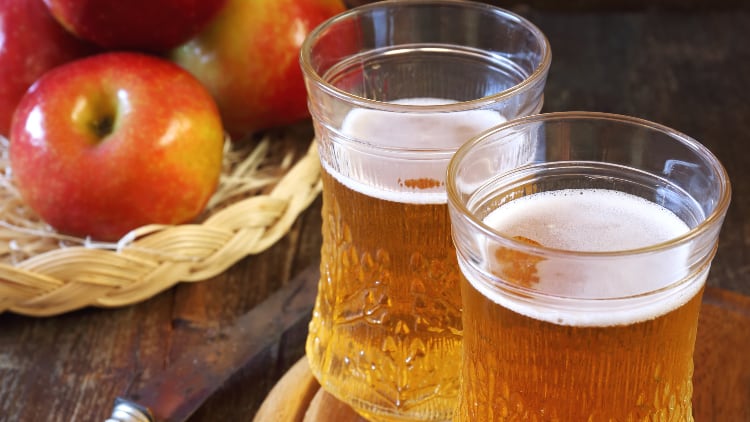
Highlight the products
You can’t just stick a pot of hot cider on the bar and expect it to sell, however.
“Using targeted social media posts and carefully placed point-of-sale material around the pub will help drive sales of mulled cider, especially when it’s only available for a limited amount of time,” says Brothers’ Randall, adding that 67% of cider drinkers say their choice of pub is influenced by the cider it stocks.
There are other ways of ensuring cider doesn’t fall off a cliff when the clocks go back. “Anything that highlights the category, such as cider festivals and messaging on blackboards, can really help promote the segment in the darker months,” says Heineken UK category & trade marketing director Jerry Shedden. “The segment can be given a boost by nudging consumers to consider drinking cider outside of the traditionally popular summer periods.”
Some ciders need a nudge more than others. “Packaged cider and particularly flavoured packaged is more seasonal,” continues Shedden, quoting CGA figures.
“Strongbow Original bucks this trend. The brand’s winter drop-off is more muted, with only about 10% less than average volumes in January to March, whereas more traditional style brands see volumes 17% below average in the first three months of the year.”
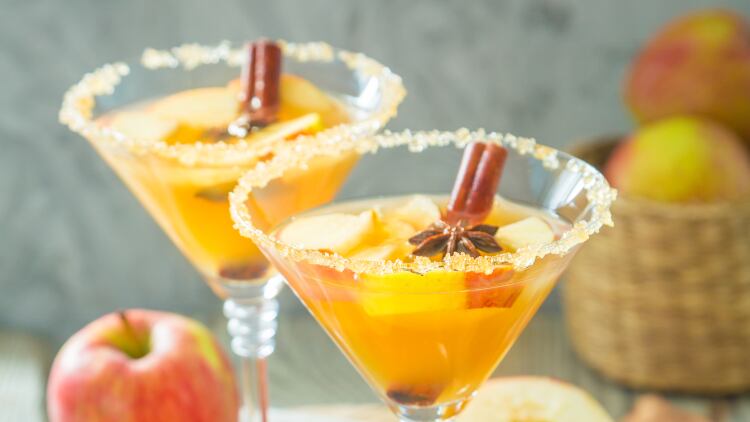
Pairing options
Others suggest pub operators could be doing more to position cider as an accompaniment to food to drive sales.
Some say cider should be served alongside classic bar snacks like pork scratchings, Scotch eggs and pork pies (apples and pork have long been happy bedfellows, after all), while Thatchers has worked with chefs, including former River Cottage head chef Tim Maddams to develop dishes that are enhanced when eaten with a draft of cider.
The Garden Cider Company’s Filby believes consumers are warming to the idea of pairing cider with food. “Unlike wine and beer, cider lacks long-established styles and categories, which have helped people promote and understand these drinks,” he says. “This has been one of the greatest challenges for cider.
However, with the UK’s first pommeliers (sommeliers specialising in cider) being accredited by the Beer & Cider Academy in September 2018, and an increasing number of new brands on the cider scene, it’s is an exciting time for us and shows that cider is a product to be taken seriously.”
Bentley at Molson Coors agrees. “A trick that shouldn’t be overlooked for winter is food and drink pairing,” he says. “With wetter weather likely on the way, more people are going to be drawn into pubs. Offering drink pairing alongside hearty menu favourites will be a great way to win favour – for example, Aspall Premier Cru Cyder is the perfect accompaniment for a cosy Sunday roast or a warming chilli con carne.”
Also, as Christmas approaches and pubgoers get in a celebratory mood, some have spotted an opportunity for cider cocktails. Thatchers, for example, suggests the Apple Martini (a blend of vodka, Thatchers Gold and apple juice), Spiced Vintage Bourbon Punch (cider, whiskey, lemon juice and more spices than you can shake a cinnamon stick at) and others, as well as its own recipe for mulled cider.
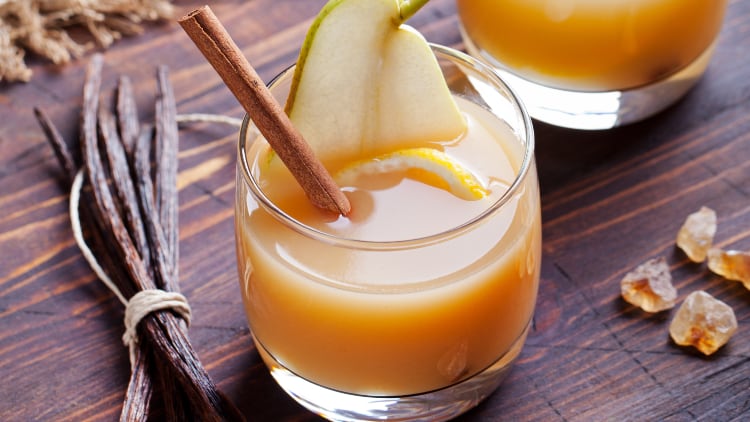
Seasonal switch
Brothers, meanwhile, has its own creations designed specifically for the festive season. “According to CGA, more than half of consumers switch to a new drinks category over the festive period,” says Randall. “We recently developed a range of cider cocktail recipes, including Brothers Stormy Toffee Apple (a blend of toffee apple cider, rum and ginger beer) and Brothers Spiced Orchard (toffee apple cider, spiced rum and lime juice), to inspire operators writing their winter drinks menus.
“While the festive season is undoubtedly a positive time for variations such as mulled cider, Christmas isn’t the only event driving sales. With Halloween – the second largest occasion for pubs after New Year’s Eve – and Bonfire Night fast approaching, both events offer strong potential for operators looking to capitalise on those in need of a winter comfort drink.”
Low-and-no lines
And, after the excesses of the festive season (and during it for those unlucky enough to be driving), there comes another opportunity to drive cider sales through low-and-no alcohol lines.
“The winter months in particular are an important period for the low-and-no alcohol category, which is now worth £50m in the UK,” says Heineken UK’s Shedden, quoting CGA numbers for the year ending 27 January 2018.
“Designated drivers and those looking to moderate or pace themselves across multiple events over the festive period still want to feel part of the group, so offering a great low-and-no range, including cider, is important to meet the needs of consumers on these occasions.
“Old Mout launched its Berries & Cherries Alcohol Free cider variant last year, which commands a higher RSP than soft drinks and promises additional category value.”
Advances in ways of producing lowand- no alcohol cider (including vacuum distillation, reverse osmosis and fermenting the juice of apples with lower sugar content), combined with the growing number of consumers looking to drink less, suggests further growth for the sub sector is on the cards.
“The volume of products entering the low-and-no cider category will continue to grow as consumers seek out healthier lifestyle choices,” says Sinéad Lowe, marketing manager for Signature Brands, which recently launched 0.5% ABV cider South West Orchards Low.
“Brands will be focusing on extending their offering to capture this new health-conscious end of the cider market and operators will be looking to extend the range they stock.” Maybe January won’t be so dry for cider makers after all?
Embracing the festive spirit
Drinkers have turned to fuller, deeper ciders as the season changes
Thatchers Cider on-trade sales director Rob Sandall sees Christmas as a key market for the cider category and believes that, although cider is still a key part of your range during the colder months, tastes may change accordingly in the sector.
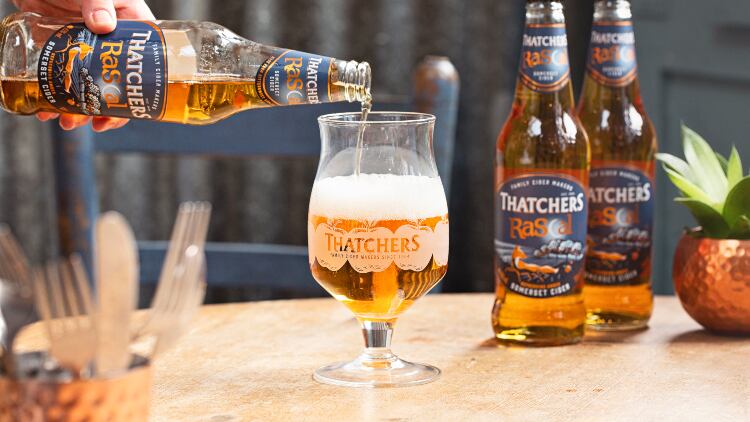
He claims: “Traditionally, drinkers have turned to fuller, deeper ciders as the season changes, just as they may turn to seasonal ales.
“Thatchers Rascal is a great example of a bitter-sweet, premium cider that has beautiful depth to it, yet still offers the crisp, refreshing taste that is characteristic of Thatchers. Rascal is a 4.5% ABV amber cider, made from all bittersweet cider apples including West Country favourites Somerset Redstreak, Dabinett and Tremlett’s Bitter, to give a refreshing cider that is balanced with a smooth sweetness and finished with a light sparkle. It is a premium cider that gives the drinker a characterful apple cider with a roguish depth, for those who are looking for something different and away from the mainstream.
“The Christmas period is a real opportunity for cider sales – in the three months leading up to Christmas and new year in 2018, it accounted for 22% of total cider sales (source: CGA 12-week period, ending 29/12/18). That amounted to a whopping £423m of sales.
“Stocking market-leading ciders – Thatchers Haze and Thatchers Gold – will generate more cash at the till for you compared to other brands. Thatchers Haze is one of this year’s biggest winners on draught, and is now the number one cloudy cider brand and is the fastest growing in the top 10 apple ciders (source: CGA 52-week period, ending 13/7/19). Thatchers Gold has the highest rate of sale among its competitors.
“With continued innovation, our new pink cider, Thatchers Rosé – the biggest cider launch this summer – is really capturing people’s attention and is bringing the trend for all things pink into cider. Using a blend of naturally sweet, rosy-red dessert apples, including Cripps Pink, Fuji and Gala, Thatchers Rosé is a deliciously sparkling, sweet Somerset Cider bursting with fruity apple flavour.
“At 4.0% ABV, Thatchers Rosé is available in 500ml recyclable bottle for the fridge and can be the perfect addition to your cider range, introducing something brand new in premium bottled cider.
“There’s a strong move towards premiumisation in the cider category, with consumers very happy to pay more for a quality product. So by maintaining a range of premium ciders on the bar for maximum consumer choice, keep your staff up to speed on the provenance and qualities of brands such as Thatchers, and encourage them to point customers towards your featured ciders. This will certainly help your cider sales increase. Embrace cider as an all year-round drink. Keep consumer interest strong by highlighting tasting notes, and by suggesting pairings with food on your menu.”

